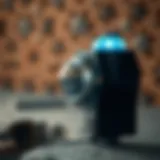Managing Wasp Infestations in Air Conditioning Systems
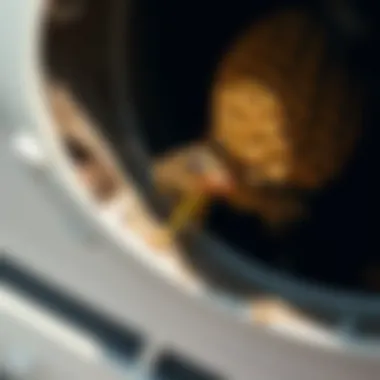
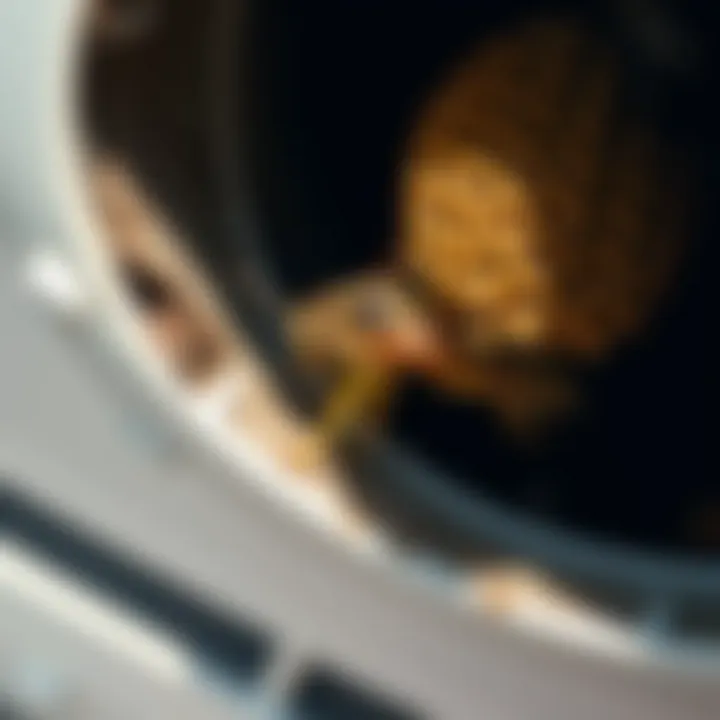
Intro
Keeping your home comfortable during the hot summer months means relying on your air conditioning unit. However, an unwelcome surprise may lurk in the depths of this essential appliance: wasps. These buzzing pests can make their nests in air conditioning units, causing not just discomfort but also potential hazards. Understanding how to address the presence of wasps is crucial for every homeowner who values a safe and pleasant living environment.
In this article, we will navigate the intricacies of wasps in air conditioning units, covering everything from identification and prevention strategies to effective treatment options. By equipping yourself with comprehensive insights, you’ll safeguard your home and ensure peace of mind.
Pest Identification
When tackling the issue of wasps nesting in air conditioning units, knowledge is your best ally. Identifying these pests and understanding their behaviors can help you take timely action.
Detailed descriptions of common pests
Wasps belong to the Hymenoptera order, and several species might be found around homes. Common types include:
- Yellowjackets: Known for their black and yellow body, these wasps are aggressive and often nest in the ground or in abandoned cavities.
- Paper Wasps: With a slender body and typically brown with yellow markings, they can be identified by their unique umbrella-shaped nests, often constructed under eaves or in sheltered areas.
- Hornets: Larger than yellowjackets, hornets are often more territorial. They construct large, round nests high in trees or structures.
Signs and symptoms of infestations
If you suspect your air conditioning unit may be a hotspot for wasps, watch for these tell-tale signs:
- Increased Wasp Activity: Noticeable buzzing and numerous wasps flying around your AC unit are strong indicators.
- Nests: Observe for any nests that may be forming in or around your unit or in nearby structures. Look for signs of construction materials like chewed wood or leaves.
- Stings: An uptick in wasp stings in the vicinity of your home can signal that they are nesting nearby, rendering your outdoor spaces less safe.
"A wasp sting can cause allergic reactions; a swift response is vital to ensure safety."
Understanding these aspects not only helps you deal with wasps more effectively, but it also empowers you to take preemptive steps to avoid a more significant infestation.
Prevention Strategies
Once you have identified the types and signs of wasps, focusing on prevention becomes essential. Taking proactive measures can save you from a headache down the line.
Home maintenance tips for pest prevention
- Ensure your AC unit is well-sealed, checking for any gaps or openings that could serve as entry points.
- Keep outdoor areas tidy, removing clutter that may attract wasps to nest.
- Regularly trim shrubs and trees, particularly those that might overhang the unit, reducing hiding spots for wasps.
Natural deterrents and barriers
Utilizing natural methods can be an effective way to deter wasps:
- Peppermint Oil: Wasps dislike the scent of peppermint. Mixing this oil with water and spraying it around the AC can discourage them from approaching.
- Cayenne Pepper: Sprinkling cayenne pepper in and around the AC unit can act as a barrier, subtly motivating wasps to find a different home.
- Decoy Nests: Wasps are territorial. Hanging decoy nests can trick real wasps into believing the area is already claimed.
Treatment Options
If wasps take residence in your air conditioning unit despite your efforts, you’ll need to consider treatment options. This stage requires careful handling.
Overview of chemical vs. natural treatments
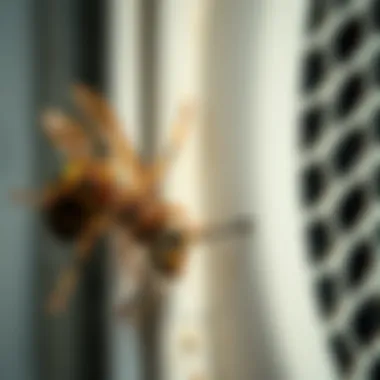
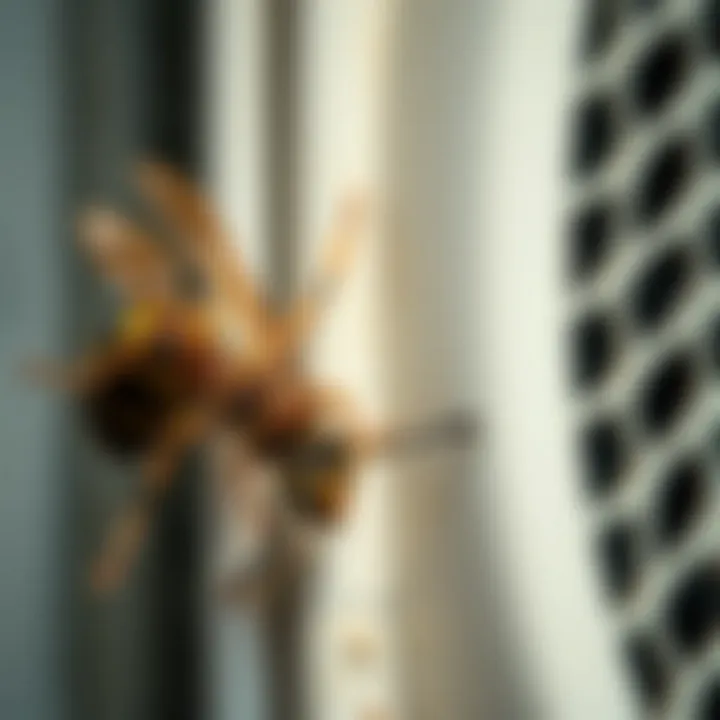
Choosing between chemical and natural treatments will depend on your comfort level and the severity of the infestation:
- Chemical Treatments: Pesticides specifically designed for wasps can be highly effective but should be handled with caution. They often come with instructions that should be followed meticulously.
- Natural Treatments: Options like the previously mentioned peppermint oil, or even dish soap solutions, can work to eliminate these pests in a more environmentally friendly way.
Step-by-step guides for DIY treatments
If you choose to tackle the problem yourself, here's a basic guide:
- Wear Protective Gear: Always prioritize safety by wearing long sleeves, pants, gloves, and a face shield.
- Prepare Treatment: If opting for a soap solution, mix two tablespoons of dish soap with water in a spray bottle.
- Evening Treatment: Approach your AC unit at dusk when wasps are less active. Spray directly onto visible wasps and into crevices.
- Check for Nests: After applying treatment, be vigilant in checking for any nests and remove them if feasible.
- Professional Help: If you find the infestation overwhelming, consider hiring pest control services to ensure thorough removal.
By understanding the nature of wasps and employing solid prevention and treatment strategies, homeowners can reclaim their comfort without fear of unwelcome buzzes infiltrating their air conditioning units.
Understanding the Issue
Understanding the issue of wasps present in air conditioning units is vital for any homeowner. Being aware of this problem allows individuals to take proactive measures to not only safeguard their property but also ensure the safety and comfort of their family members. Wasps are not just a nuisance; their presence can lead to various complications, ranging from damage to the air conditioning unit to potential health risks for those living in the vicinity.
A key element of grasping this phenomenon lies in understanding the behavior of wasps. When homeowners know how wasps typically act, they can better anticipate when and where they might establish nests. For example, wasps tend to be attracted to areas that offer both shelter and access to food sources. This insight can inform decisions on where to install outdoor units for air conditioning, helping to minimize the chance of infestations.
Moreover, understanding why wasps nest in air conditioning units specifically can help identify preventive measures. These insects are often drawn to the cool and secure environment created by these units, making them an attractive location for building their colonies. By recognizing these nesting tendencies, property owners become armed with the knowledge necessary to deter wasps effectively.
Then there's the risk associated with infestations. When a colony of wasps expands within an air conditioning system, the consequences can range from unit malfunction to severe allergic reactions among those disturbed. Therefore, it's crucial to be informed about how to spot an infestation before it spirals out of control. This article aims to shed light on these nuances, guiding readers through the essential points related to behavior, nesting reasons, and associated risks explicitly linked to wasps and air conditioning units. Maximizing awareness ensures homeowners take the right steps swiftly, thus preserving harmony at home.
Knowledge is power. Being aware of the signs of wasps and their nesting habits can prevent much bigger headaches down the road.
Arming oneself with information about why wasps might choose an air conditioning unit as their home is not just about averting a pest problem. It’s about reclaiming control over one’s living space. As we peel back the layers of this intriguing topic, readers will find practical approaches to both prevent future issues and address those that have already cropped up.
Identifying the Problem
When addressing issues with wasps in air conditioning units, it’s crucial to first identify the problem. This isn't just about removing a few pests; it’s about protecting your home and your peace of mind. Understanding the signs of infestation and knowing how to check your units can save you time, money, and frustration.
Common Signs of Wasp Infestation
Recognizing the signs of a wasp infestation is the first step to addressing the issue effectively. Homeowners should be vigilant about these key indicators:
- Buzzing Sounds: The sound of wasps buzzing around the AC unit is a telltale sign. If you hear more activity than usual, something may be brewing.
- Visible Nests: Spotting a nest around your unit is pretty straightforward. Wasps are known to build small, paper-like nests and they might be hidden in the unit’s crevices.
- Wasp Presence: Seeing wasps frequently flying near your air conditioner, especially during warm days, can be an omen they’ve taken up residence.
- Damage to the Unit: Look for any signs of physical damage around the unit or surrounding areas. Wasps can chew through insulation, potentially leading to future problems.
"Being proactive about wasp identification can save you from larger headaches down the line."
Inspecting Your Air Conditioning Unit
After recognizing potential signs of a wasp infestation, inspecting your air conditioning unit is essential. Here's how you can carry out an effective inspection:
- Turn Off the Power: Before delving in, safety first! Turn off your AC unit to ensure you don’t disturb any wasps unnecessarily while checking.
- Visually Examine the Unit: Look closely at the outer casing and grilles for any visible nests or wasps congregating. This provides clues on the severity of the situation.
- Check Inside the Unit: If you feel comfortable, carefully inspect inside the unit. Some wasps may find their way into the mechanics, creating a nest in unexpected places.
- Monitor Other Surrounding Areas: Don’t just stick to the unit itself. Check nearby trees or spaces where they could be nesting and returning to.
Make note of your findings for future reference. If the situation looks more complicated than a simple fix, it's best to consider next steps for removal or prevention.


In summary, identifying the problem of wasps in air conditioning units is pivotal. The sooner you recognize the signs and carry out an inspection, the easier it will be to address and resolve any infestations, allowing your home to remain safe and comfortable.
Preventive Measures
Preventive measures play a crucial role in managing wasps in air conditioning units. It's an investment in your peace of mind as well as the wellbeing of your home. Effective prevention can minimize the chances of wasps nesting in and around your air conditioning unit, which is not only a nuisance but can also lead to damage and safety concerns. The focus here should be on regular upkeep, smart positioning of outdoor units, and leveraging natural solutions to deter these pests.
Regular Maintenance Practices
Regular maintenance of your air conditioning unit is a necessity. A well-kept system is less inviting to wasps and other pests. This begins with routine inspections. Homeowners should check their units at least biannually. Look for any signs of wear and tear, like cracks in the casing or gaps where wasps might enter. It’s also a good idea to keep the area around the unit clean and free of debris where wasps might find shelter.
- Cleanliness: Regularly clear away leaves, twigs, and other materials from the unit. Wasps often nest near sources of food or shelter.
- Functionality: Ensure that the unit is running efficiently. A malfunction or leak can not only attract pests but can also lead to bigger problems down the line.
- Professional Support: Consider having a technician check your air conditioning system every couple of years. They have an eye for detecting issues before they get out of hand.
By maintaining the air conditioning unit, you reduce the potential for it to become a breeding ground for wasps, making the environment less appealing for these pests.
Strategic Placement of Outdoor Units
Choosing the right spot for your outdoor air conditioning unit can greatly impact its vulnerability to wasps. Ideally, the unit should be placed in an area that minimizes exposure to the elements while also discouraging pests. For example:
- Location: Situate the unit away from flowering plants or fruit trees, which can attract wasps.
- Sunlight: Place the unit in a well-lit area, as this tends to deter wasps. They prefer dark, sheltered spaces for nesting.
- Distance: If possible, keep the unit at a distance from other structures where wasps like to make a home, such as eaves or nearby fences.
Reducing accessibility and visibility for wasps is vital. The more out of sight, the less likely wasps will decide to take up residence in your unit.
Use of Natural Repellents
When it comes to deterring wasps, natural repellents can be surprisingly effective. Unlike toxic chemicals, these solutions are safer for both humans and the environment. Here are some options to consider:
- Peppermint Oil: Wasps are known to dislike the scent. Dilute a few drops with water and apply it around the unit.
- Vinegar: A mixture of vinegar and water can deter wasps when sprayed around potential nesting sites.
- Cucumbers: Placing slices of cucumber around the area is said to keep wasps at bay due to their aversion to the vegetable.
Implementing these natural repellents can help reduce the chances of wasps taking up residence in your air conditioning unit.
Important Note: Always remember that while these preventive methods are effective, they should be combined with regular monitoring and quick intervention should any signs of wasps appear.
Addressing an Existing Infestation
When it comes to wasps making themselves at home in your air conditioning units, addressing the situation becomes crucial. Ignoring the signs of an infestation not only compromises the efficiency of your AC system but could also lead to safety risks for your family. Understanding how to handle an existing infestation is key to ensuring your home remains comfortable and safe throughout the warmer months.
Safe Removal Techniques
Taking care of wasps can be a daunting task. However, with the right techniques, you can manage the removal process effectively and safely. Here's a step-by-step approach:
- Assess the Situation
Before attempting to remove any wasps, it’s important to understand their behavior. Wasps typically become more aggressive when provoked. Observe from a safe distance to note the nest location and the size of the colony. - Plan Your Timing
The best time to address wasps is during dusk or dawn, as their activity levels decrease during these times. This minimizes the possibility of getting stung. - Protect Yourself
Wear long sleeves, pants, gloves, and a face mask to shield yourself from potential stings. Even if you feel confident, this precaution is always wise. - Use a Wasp Spray
Purchase a specialized wisp spray that can shoot foam or liquid from a safe distance. Follow the instructions carefully and apply the spray directly onto the nest, ensuring to do it at a time when you’re at a safe distance. - Remove the Nest
Once you've confirmed that the wasps are dead, wear gloves to remove the nest. It’s essential to dispose of it in a sealed bag, ideally placing it in an outdoor bin far from your home.
"A proactive approach goes a long way in dealing with wasp infestations; never underestimate the importance of safety procedures."
By following these steps, you can effectively handle wasps. However, these methods may not always guarantee a problem-free environment, especially if you choose to handle the situation on your own.
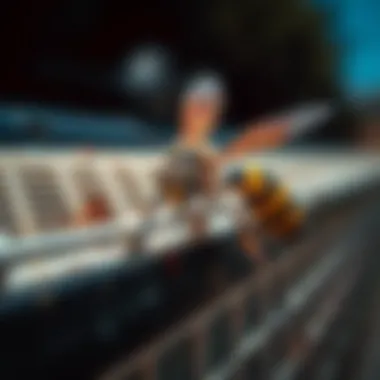

When to Seek Professional Help
Sometimes, getting rid of wasps isn’t as straightforward as simply using a spray. If you find yourself facing a large infestation or if you feel uncomfortable tackling the removal process, it might be time to call in the professionals. Here are some indicators that professional help is necessary:
- Large Nest
If you observe a sizable nest, it could indicate a large colony. In this scenario, professionals have the tools and expertise to manage the situation without risk. - Aggressive Behavior
If wasps are exhibiting aggressive behavior – buzzing around you or even stinging – don’t hesitate to reach for expert services. You can protect yourself from potential harm. - Nest Location
If the nest is in a hard-to-reach place, such as inside your air conditioning unit or on a high ledge, it's best to leave the removal to those experienced in the field. - Recurrent Infestations
If wasps seem to return year after year, a pest control operator can help identify root causes and address them more effectively than DIY methods.
In the end, knowing when to enlist professional assistance can mean the difference between a simple job and a complicated, potentially hazardous situation. As the saying goes, "It’s better to be safe than sorry."
By taking early action, you not only safeguard your home from the risk of infestation but also contribute to a more comfortable living environment.
Long-Term Management Strategies
Long-term management strategies are crucial in tackling wasp infestations, particularly in air conditioning units. It’s not simply about dealing with an outbreak when it occurs, but rather, fostering an environment that discourages these pests from even considering your unit as a potential home. By being proactive, homeowners can significantly reduce the likelihood of wasps becoming an issue in the first place.
Creating a Pest-Resistant Environment
To establish a pest-resistant environment, it's necessary to eliminate factors that attract wasps and other pests. Below are some effective strategies:
- Cleanliness is Key: Regular cleaning around your outdoor units can go a long way. Wasps are drawn to leftover food, trash, and even sweet-scented plants. Maintaining a tidy area will help keep them at bay.
- Seal Entry Points: Inspect your air conditioning unit and surrounding structures for any holes or gaps. Wasps can squeeze through surprisingly small openings. Use caulking or mesh screens to close off these entry points.
- Strategic Landscaping: Consider planting vegetation that doesn't attract wasps. Opt for flowers and shrubs that are less appealing to these insects and instead attract natural predators.
- Regular Inspections: Conduct periodic checks of your air conditioning unit and its surroundings. If you spot any wasp nests forming early, they can be removed before they become a larger problem.
Creating a pest-resistant environment involves vigilance and maintaining good practices. It may take some effort upfront, but the peace of mind and comfort it brings are well worth it.
Education and Awareness on Pest Control
Knowledge and awareness play vital roles in effective pest management, especially when it comes to wasps. Homeowners should educate themselves about wasp behavior and the most effective control methods. Here are some pointers:
- Understanding Wasp Lifecycle: A clear understanding of how wasps live and breed can inform better control methods. For instance, knowing when wasp activity peaks can prepare homeowners for seasonal spikes in populations. Knowledge about the species in their area can help tailor specific management strategies.
- Utilizing Community Resources: Many local government bodies provide resources and educational materials about pest control. Websites such as cdc.gov and epa.gov offer comprehensive guides on pest management and safety measures.
- Neighborhood Initiatives: Being part of a community initiative focusing on pest control can also be beneficial. Sharing information and resources among neighbors can foster a collective approach to reducing the wasp population in the area.
- Stay Updated: Knowledge is ever-evolving. Staying informed about new pest control products or methods can equip homeowners with the latest tools to fight infestations effectively.
Education combines with awareness will empower residents to take proactive steps in managing potential infestations.
"An ounce of prevention is worth a pound of cure.”
By establishing these long-term management strategies, homeowners can decrease the chances of wasps colonizing their air conditioning units and ensure a comfortable and safe environment.
Epilogue
In concluding this examination of wasps and their intrusion into air conditioning units, it is essential to grasp the broader implications of the presence of these pests. Understanding the behavior and nesting patterns of wasps sheds light on why they might pick such an abode. Not only does saving a few bucks on a service call appeal to many, but so does the idea of preserving one’s home environment against unwelcome guests. Wasps, with their potential to disrupt both comfort and safety, warrant serious attention from homeowners.
Summarizing Key Takeaways
When pondering the findings laid out in this article, several core takeaways are pivotal for anyone looking to keep their air conditioning units free from pesky wasps:
- Know the Signs: Recognizing the signs of a wasp infestation early can prevent larger issues later. Keep an eye out for unusual activities around the outdoor unit.
- Routine Maintenance: Regular cleaning and checks of your air conditioning systems are critical. This not only aids in maintaining efficiency but also reveals early signs of wasp activity.
- Effective Removal: If an infestation does occur, utilizing safe techniques for removal is vital. Choosing to employ professional pest control services can save time and ensure safety.
- Preventive Measures: Positioning air conditioning units away from dense foliage and utilizing natural deterrents can significantly lower the chances of wasp nesting.
Incorporating these strategies goes a long way in ensuring a comfortable living environment, free from the threat of wasps.
Encouragement for Ongoing Vigilance
Lastly, a proactive mindset is key to preventing future infestations. Homeowners ought to remain vigilant. Regularly inspect not only the air conditioning units but also the surroundings. While it's easy to forget about nature as the seasons shift, wasps can surprise even the most careful of households. The emphasis on awareness cannot be overstated; being informed about seasonal behaviors of wasps and recognizing changes around your property equips you to act swiftly.
Implementing preventive approaches today can spare a world of hassle tomorrow. For those who wish to delve further into pest control best practices, numerous resources are available that focus on home maintenance and pest management. Sites like Wikipedia and Britannica provide in-depth information, while community discussions on platforms like Reddit allow homeowners to share experiences and solutions.
In sum, the journey towards a pest-free home involves education, observation, and timely intervention—all necessary elements for any homeowner keen on keeping their living spaces serene and welcoming.
